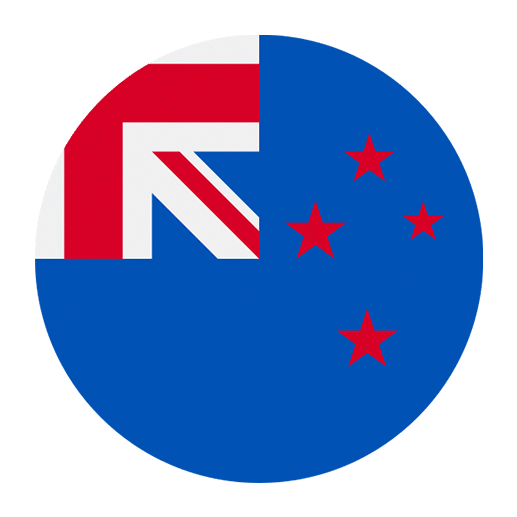Māori, the indigenous language of New Zealand, is a rich and vibrant language that offers unique insights into the culture and history of the Māori people. As interest in learning Māori continues to grow, it’s essential to tailor lessons to suit different age groups. This approach ensures that learners remain engaged and motivated, while also catering to their developmental needs and learning styles.
Understanding the Importance of Age-Appropriate Lessons
Teaching any language requires sensitivity to the age and developmental stage of the learner. Younger children, adolescents, and adults all have different cognitive abilities, interests, and learning preferences. By customizing Māori language lessons to different age groups, educators can create a more effective and enjoyable learning experience.
Early Childhood (Ages 3-6)
Early childhood is a critical period for language development. Young children are naturally curious and absorb new languages quickly. When teaching Māori to this age group, it’s important to create a fun and interactive environment.
Methods:
1. **Songs and Rhymes:** Children love music, and incorporating Māori songs and rhymes can make learning enjoyable. Simple songs with repetitive phrases help reinforce vocabulary and pronunciation.
2. **Storytelling:** Use Māori legends and stories to capture the imagination of young learners. Visual aids like picture books or puppets can enhance the storytelling experience.
3. **Games and Activities:** Interactive games such as matching words to pictures, playing memory games with Māori vocabulary, or engaging in role-play can make learning dynamic and enjoyable.
Content:
– **Basic Vocabulary:** Focus on everyday words such as family members (whānau), colors (ngā tae), animals (ngā kararehe), and common objects (ngā mea).
– **Simple Phrases:** Teach simple greetings (kia ora), introductions (ko wai koe?), and polite expressions (tēnā koe).
– **Cultural Elements:** Introduce basic cultural concepts such as the importance of respect (manaakitanga) and community (whanaungatanga).
Primary School (Ages 7-12)
Primary school children have a greater capacity for structured learning and can handle more complex language tasks. This age group benefits from a mix of interactive activities and structured lessons.
Methods:
1. **Interactive Lessons:** Use a blend of visual, auditory, and kinesthetic activities to cater to different learning styles. Incorporate multimedia resources like videos, apps, and interactive whiteboards.
2. **Group Activities:** Encourage cooperative learning through group projects, dialogues, and language games. This fosters communication skills and teamwork.
3. **Cultural Immersion:** Organize cultural days where students can experience Māori traditions, such as learning a haka (traditional dance) or weaving flax (harakeke).
Content:
– **Expanded Vocabulary:** Introduce more specific vocabulary related to school, nature, food, and hobbies.
– **Grammar Basics:** Teach fundamental grammar rules, such as sentence structure (subject-verb-object), possessive pronouns, and verb conjugations.
– **Cultural Knowledge:** Deepen understanding of Māori culture by exploring traditional practices, myths, and significant historical events.
Adolescents (Ages 13-18)
Adolescents are capable of abstract thinking and more complex language use. They also have specific interests and are more self-directed in their learning.
Methods:
1. **Thematic Lessons:** Create lessons around themes that interest teenagers, such as technology, sports, music, and social issues. This relevance can increase engagement.
2. **Project-Based Learning:** Encourage students to undertake projects that involve research and presentation in Māori. This could include creating a Māori language blog, producing a short film, or conducting interviews.
3. **Debates and Discussions:** Facilitate debates and discussions on various topics in Māori. This helps develop critical thinking and advanced language skills.
Content:
– **Advanced Vocabulary:** Focus on specialized vocabulary and idiomatic expressions.
– **Complex Grammar:** Teach advanced grammatical structures, such as conditional sentences, passive voice, and complex verb forms.
– **Cultural and Historical Context:** Provide a deeper understanding of Māori history, including significant events like the Treaty of Waitangi and contemporary issues facing Māori communities.
Adults (18+)
Adult learners often have specific goals and motivations for learning Māori, whether for personal interest, professional development, or cultural connection. They typically appreciate a more structured and goal-oriented approach.
Methods:
1. **Structured Courses:** Offer well-organized courses that outline clear objectives and outcomes. Include a balance of theory and practice.
2. **Practical Application:** Provide opportunities for adults to use Māori in real-life contexts, such as through conversational practice, community events, or workplace scenarios.
3. **Self-Directed Learning:** Encourage adults to take responsibility for their learning by setting personal goals, using online resources, and engaging in self-study.
Content:
– **Professional Vocabulary:** Tailor vocabulary to specific fields of interest, such as business, healthcare, education, or law.
– **Advanced Grammar and Syntax:** Focus on refining grammar and syntax to achieve fluency and accuracy.
– **Cultural Competence:** Enhance cultural understanding through in-depth exploration of Māori customs, protocols (tikanga), and contemporary issues.
Incorporating Technology and Resources
Technology plays a crucial role in modern language learning and can be especially beneficial for teaching Māori across different age groups.
Digital Tools and Apps
There are numerous language learning apps and digital tools designed to support Māori language acquisition. These resources can provide interactive and engaging ways to practice vocabulary, grammar, and pronunciation.
1. **Language Apps:** Apps like “Kupu” and “Drops” offer interactive lessons and games focused on Māori vocabulary.
2. **Online Dictionaries:** Digital dictionaries and translation tools, such as Te Aka Māori Dictionary, can help learners expand their vocabulary and understanding of word meanings.
3. **E-Learning Platforms:** Platforms like “Education Perfect” and “Māori Language.net” offer comprehensive online courses and resources for learners of all ages.
Multimedia Resources
Using multimedia resources can enhance the learning experience by providing diverse and engaging content.
1. **Videos and Podcasts:** Educational videos and podcasts in Māori can help improve listening skills and provide cultural insights. Shows like “Te Karere” and podcasts like “Taringa” are valuable resources.
2. **Social Media:** Social media platforms can connect learners with Māori-speaking communities and provide opportunities for practice and immersion. Following Māori language pages and participating in online groups can be beneficial.
3. **Interactive Games:** Digital games and quizzes can make learning fun and interactive. Websites like “Quizlet” allow users to create and share Māori language flashcards and quizzes.
Engaging the Community
Community involvement is vital for language revitalization and can greatly enhance the learning experience for all age groups.
Intergenerational Learning
Encouraging intergenerational learning can strengthen cultural connections and create a supportive learning environment.
1. **Family Learning:** Promote language learning within families by providing resources and activities that parents and children can do together.
2. **Elders as Mentors:** Involve Māori elders in the teaching process. Their knowledge and experience can provide valuable cultural context and authenticity.
Community Events and Workshops
Organizing community events and workshops can provide immersive learning opportunities and foster a sense of community among learners.
1. **Language Classes:** Offer community-based language classes for different age groups. These classes can create a supportive and collaborative learning environment.
2. **Cultural Festivals:** Participate in or organize cultural festivals and events where learners can practice their Māori language skills and experience Māori culture firsthand.
3. **Language Immersion Camps:** Host language immersion camps for different age groups. These camps provide intensive language practice and cultural activities in a supportive setting.
Conclusion
Tailoring Māori language lessons to different age groups is essential for effective and engaging learning. By understanding the unique needs and preferences of each age group, educators can create lessons that are both enjoyable and educational. Incorporating technology, community involvement, and a variety of teaching methods can further enhance the learning experience and contribute to the revitalization and preservation of the Māori language. Whether teaching young children, adolescents, or adults, the goal is to foster a deep connection to the language and culture, and to inspire lifelong learning and appreciation for te reo Māori.

